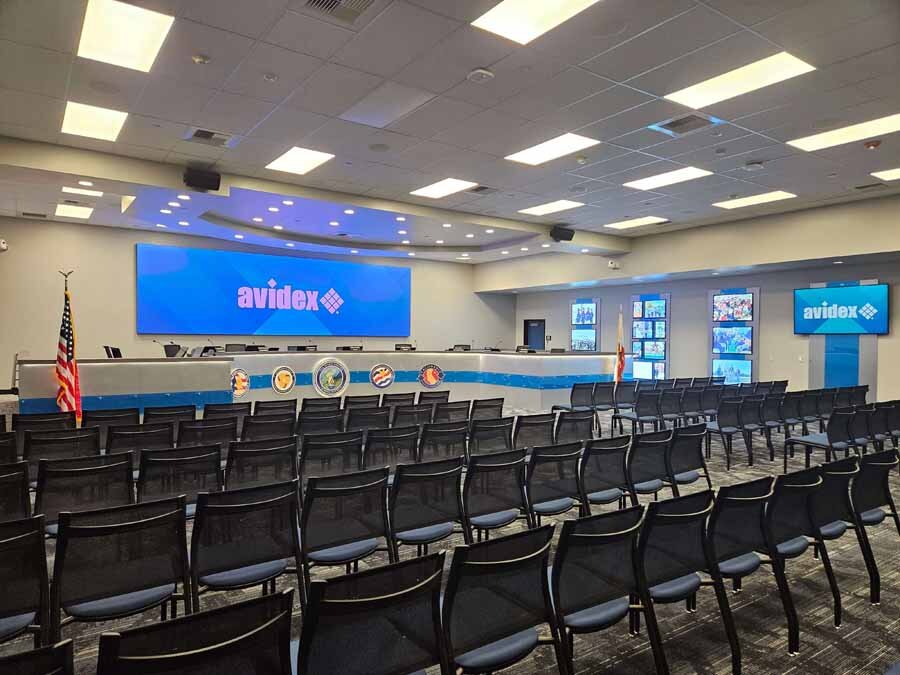2 min read
Understanding the Differences Between AV Installation and AV Integration
![]() Avidex
Sep 4, 2024 9:49:02 AM
Avidex
Sep 4, 2024 9:49:02 AM

In today's fast-paced corporate environment, audiovisual (AV) technology plays a crucial role in enhancing communication, collaboration, and overall productivity. However, there's often confusion between two key terms in the AV industry: AV installation and AV integration. While they might seem similar on the surface, they represent distinct processes with different implications for your business. Understanding these differences is essential for making informed decisions that align with your organization's needs and long-term goals.

What is AV Installation?
AV installation refers to the process of physically setting up audiovisual equipment in a designated space. This could include mounting displays, installing projectors, setting up sound systems, and connecting all necessary hardware to ensure the system is operational. The focus here is on the technical assembly and configuration of AV components.
During an AV installation, technicians follow specific guidelines to ensure that all equipment is correctly placed and connected. For example, in a corporate boardroom, this might involve installing a projector, connecting it to a sound system, and ensuring that the entire setup works seamlessly with the room's lighting and layout.
Key aspects of AV installation include:
- Equipment Placement: Properly positioning displays, speakers, and other AV components.
- Wiring and Connectivity: Ensuring all devices are connected and wired correctly.
- Configuration: Basic setup and configuration of AV systems for immediate use.
While AV installation is essential, it’s often just the first step toward a fully functional AV system.
What is AV Integration?
On the other hand, AV integration is a more comprehensive process that goes beyond the physical installation of equipment. It involves the seamless blending of various AV components into a unified system that operates harmoniously within your existing infrastructure. AV integration focuses on creating a user-friendly environment where all AV technologies work together efficiently.
AV integration encompasses everything from system design and engineering to programming, testing, and ongoing support. The goal is to create an integrated AV system that enhances the user experience and meets specific business objectives, whether it’s improving communication in conference rooms or enabling advanced video conferencing capabilities.
Key aspects of AV integration include:
- System Design: Customizing AV solutions to meet the unique needs of your organization.
- Programming: Configuring systems for automation, control, and ease of use.
- Interoperability: Ensuring all AV components work seamlessly with each other and existing IT systems.
- Ongoing Support: Providing maintenance, troubleshooting, and updates to ensure long-term functionality.
In the context of a corporate setting, AV integration might involve designing a system that allows for one-touch control of all conference room equipment, integrating video conferencing tools with calendar systems, and ensuring that the AV system is compatible with the company's network infrastructure.
Why the Difference Matters
Choosing between AV installation and AV integration depends on your business’s specific needs. If you’re looking for a straightforward setup where the primary goal is to have the equipment installed and operational, then AV installation might be sufficient. However, if your objective is to create a sophisticated, cohesive AV environment that enhances your business's operations and can evolve with technological advancements, then AV integration is the way to go.
Understanding these differences also helps in communicating your needs to AV professionals. Whether you're in the initial stages of planning or seeking to upgrade your existing system, knowing what each term entails ensures you get the right services to meet your objectives.
In summary, while AV installation focuses on the setup and configuration of audiovisual equipment, AV integration takes a more holistic approach, ensuring that all components work together as part of a cohesive system. For businesses looking to leverage the full potential of their AV technology, understanding and choosing the right approach is crucial.
How Avidex Can Help
At Avidex, we specialize in delivering comprehensive AV integration solutions that go beyond simple equipment setup. With years of experience in the audiovisual industry, we understand the unique challenges that businesses face when it comes to creating seamless, efficient AV systems. Our team of experts works closely with your organization to design, implement, and support integrated AV solutions that align with your goals and infrastructure.
Learn more about our award-winning project process.


